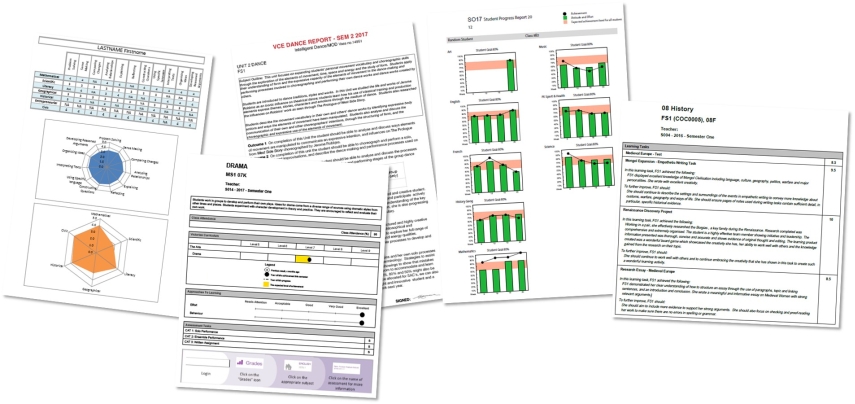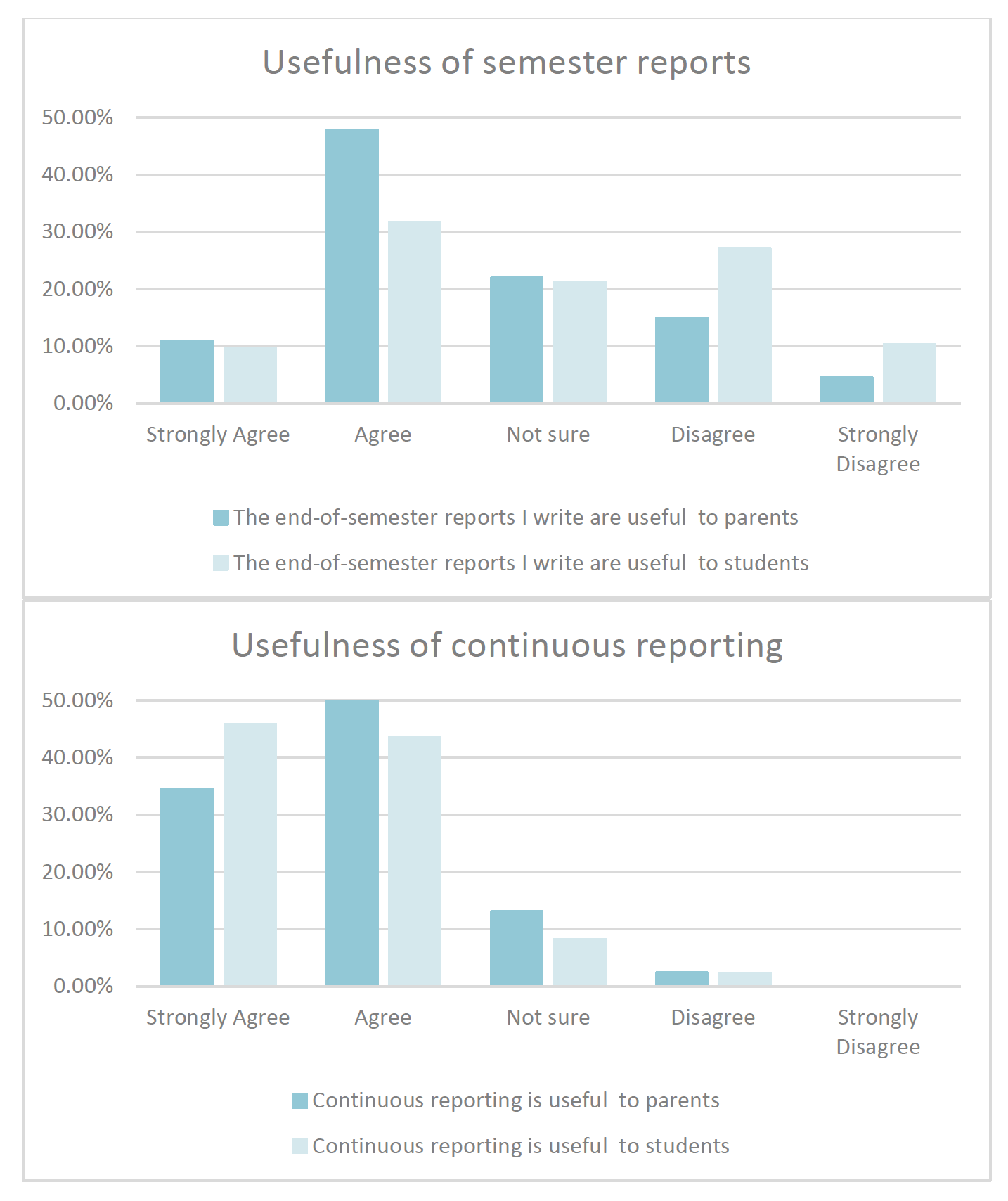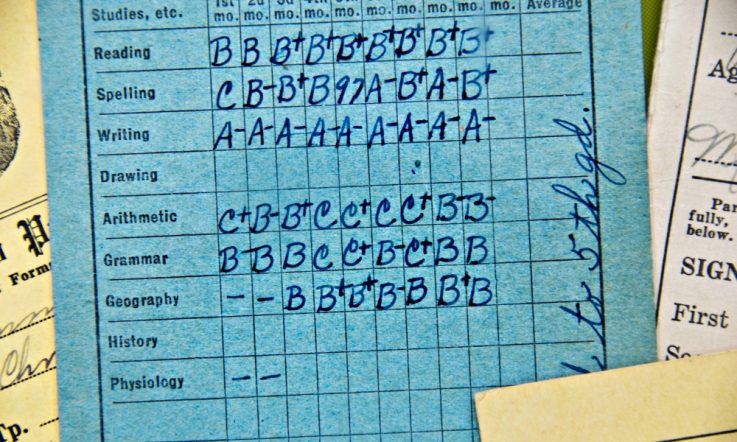Despite student reports representing a hefty workload for teachers and leaders, and occupying a significant place in the school calendar as a student and parent communication tool, little research has been carried out into their effectiveness and value. So, is it time to rethink traditional approaches such as the end of semester report card?
In the fourth and final part of a series on the ‘Communicating Student Learning Progress' project, Dr Hilary Hollingsworth and Jonathan Heard share some of the main findings from the three-year Australian Council for Educational Research (ACER) study, and recommendations for the future.
This has been described as a ‘ground-breaking' study. What did you set out to investigate and what did the research involve?
This project is part of an ACER strategic initiative focused on assessment reform and innovation. We wanted to investigate the effectiveness of schools' activities related to communicating student learning progress, including whether they provide quality information and how much they are valued by students, parents/carers and teachers.
We started by carrying out a scan of research in this area and reviewed existing state, territory and national policies in relation to reporting requirements. We also looked at technology platforms being used by schools for communicating learning progress and collected examples of student reports from across the country and for a range of year levels.
An important part of the study was gathering the views of teachers, students and parents/carers on the current approaches being used to communicate learning progress in their own schools. This included an online teacher survey, and focus group discussions with teachers and parents/carers, which were based on three themes: what they would like to retain from current approaches; what they would like to remove; and what they would like to reimagine to make them more effective.
We've now published a report of the study findings and recommendations (Hollingsworth, Heard & Weldon, 2019).
Can you give an overview of some of the main findings?
Although current legislation on reporting student progress applies to all schools in Australia it is fairly generic, so there's scope for systems, and individual schools, to design their own approaches.
The most recent Gonski report emphasises the importance of communicating both individual achievement and learning growth but our analysis revealed that, with few exceptions, Australian school reports tend only to report student achievement. This singular focus on grades and scores – often measuring performance against year level expectations and using achievement scales such as A-E grading – can leave parents with little insight into their child's learning growth and can be demotivating for students.
We collected lots of examples of student reports used by different schools and found the contents and formats varied considerably. For example: some reports included information about different aspects of school and learning, such as work habits and extra-curricular activities; some included information about the next steps for learning; there were different performance indicators, such as grades, percentages, or ranking students by class or cohort; and some of the reports included teacher comments.

Figure 1. Example of report formats (Hollingsworth, Heard & Weldon, 2019).
We observed a difference in design between primary and secondary reports. Primary reports appeared to be aimed at giving a fairly detailed, holistic view of the student as a learner. Typically, teacher comments were related to knowledge, skills and dispositions. For secondary students, it was more a snapshot-like summative view of performance in distinct learning areas and tasks, rather than giving an overall impression of them as a learner.
There were also some interesting findings in relation to teacher comments. For example, primary school report comments (more so than secondary) tended to praise and affirm, and highlight interpersonal skills and dispositional qualities. Secondary reports were more likely to not contain any teacher comments at all, or only improvement-focused comments. Where they did include comments relating to student achievement, these were more likely to be in reference to an assessment task.
Teacher comments in reports were one of the most exhaustively discussed themes in the focus groups we held with teachers, students and parents.
The consistent message from students was that they wanted the comments to be specific, to be personalised and targeted, and to include information on the next steps of learning. They felt they could tell when teachers were writing generic comments and tended to disregard these. Almost all students admitted they check their grades first, but they did want feedback about how to improve.
The parents we spoke with were not necessarily averse to grades, but they wanted more explanation of what they mean. Parents overwhelmingly wanted to retain teacher comments on reports as they felt they were a good guide to understanding the information. In addition, they wanted personalised information – individualised feedback about the progress and growth of their own child rather than ‘cut and paste' comments from a data bank. Another consistent response was the need for jargon-free, accessible language, which sometimes arose when reports listed outcome statements from the curriculum.
From the teacher perspective, many were positive about comments in reports but fewer teachers than parents mentioned the importance of them being personalised. Teachers were concerned with comments being aligned to a teaching and learning focus, that they should be strength- and improvement-focused and that they should be objective and constructive.
Our analysis suggests that schools and teachers are grappling with the purpose, and place, of teacher comments in student reports. This, and the considerable variation that we found in the contents and formats of student reports, provokes questions such as:
- What are the consequences of this variability? For students? For parents? For teachers? For schools? For systems?
- How does the ‘grain-size' of what is reported impact the interpretation of information for different stakeholders?
- To what extent should all reports – primary and secondary – ‘zoom out' from the individual achievements a child has made to compose a holistic picture of the learner? Is there a reason why we accept or expect this at the primary years but not at the secondary level?
- What are essential inclusions for a meaningful report?
- What is the purpose of student reports?
You mentioned there ‘what is the purpose of student reports?'. That was one of the questions in the online teacher survey. What were some of the main survey responses?
Six out of 10 teachers referred to the purpose of reporting as being, in some way, to communicate student progress. A total of 22 per cent of participants mentioned communicating ‘achievement', or what a student has ‘achieved', while less than six per cent referred to communicating ‘how well' a student has ‘performed' during the semester. What's interesting, is, this doesn't correspond with our analysis of student reports we collected – they mostly reported achievement in terms of performance rather than progress.
In the teacher survey, just over half of the participants said they used some form of continuous reporting at their school.
We asked teachers about the usefulness of end-of-semester reporting and the usefulness of continuous reporting. The responses can be seen in the figure below.

Figure 2. Teachers' views of the usefulness of semester reports and continuous reporting (Hollingsworth, Heard & Weldon, 2019).
In the study findings, you discuss the cost of reporting. It's not just financial, is it?
No, there is a considerable financial outlay associated with reporting, but also ‘opportunity costs' for teachers – such as time and effort spent outside of school hours, and the time away from students. In our discussions with students, some said they could tell when it is reporting time, as their teacher is more stressed. They also thought report writing may take time away from teachers that they would otherwise spend on planning lessons or marking.
This idea that there's a certain ‘time of year' when reporting happens, what were some of the concerns raised about timing?
Parents seemed to be aware of and spoke about the lead-time time needed to prepare reports and, again, the issue of teachers being diverted away from teaching and learning. They also wanted more frequent communication about their child's learning so they could provide timely support. For teachers and schools, formally reporting to parents at the end of a semester is often seen as ‘too late'.
Parents and teachers were largely in favour of using technologies to improve the timeliness (and frequency) of reporting to parents. Online management systems typically enable teachers to continuously report on student achievement throughout the school year, providing parents with information closer to the point of assessment. This is prompting some schools to reconsider the purpose and format of end of semester reports.
Parents and teachers also welcomed the opportunity to meet but there were issues raised about the current formats used for parent-teacher meetings. For example, some reported the focus of interviews can often be unconnected to students' reports and their learning progress. Parents and teachers wanted more meaningful interactions. One parent said parent-teacher conferences were like ‘speed-dating'. One teacher suggested meetings could be guided by student work samples.
Should all schools be required to adopt the same approach?
No, that's not what we're suggesting. In our report, we share three key learnings from the study: the future place and role of the traditional semester report is uncertain; student reports tend to communicate achievement, but few appear to communicate student progress; and, there's scope to improve the clarity of information communicated about student learning.
There are a variety of methods schools can use to communicate student progress. We're recommending that schools think about their own context. There may be opportunities to streamline the process of communicating student learning, and that may include the use of technologies. Many schools already use continuous reporting alongside written reports, parent-teacher interviews and portfolios as part of their broader approach to communicating student learning progress, but our consultations with stakeholders would suggest few have aligned these different forms of communication.
Whatever methods they choose, these methods should have distinct, but complementary, purposes – and that's one of the eight recommendations we make. The other seven are that student reporting should: use consistent terminology; be continuous and aligned to the assessment cycle; explicitly represent and communicate learning progress; explicitly communicate student learning against expectations; clearly articulate how performance ratings are defined; present information that is accessible and provides different levels of detail; include specific directions for future learning.
In terms of student reporting, there hasn't been much Australian research in this area. What are the next steps?
This was a small-scale project and more questions emerged than answers. We're hoping that our study report provokes debate and action – with respect to current and future policy and practice, and research in this area.
Stay tuned: Over the coming months, we'll be sharing examples of how schools are changing the way they communicate student learning progress.
References
Hollingsworth, H., Heard, J., & Weldon, P. (2019). Communicating student learning progress: A review of student reporting in Australia. Camberwell, Australia: Australian Council for Educational Research. Retrieved from https://research.acer.edu.au/ar_misc/34
With a colleague, or group of colleagues, make a list of the methods you use to report student learning progress. Consider the purpose of each.
How well does student reporting in your school – in whatever form it takes – really communicate student learning progress?
The full report, Communicating Student Learning Progress: A Review of Student Reporting in Australia, and the Findings in brief are available to download from the ACER Research Repository https://research.acer.edu.au/ar_misc/34



